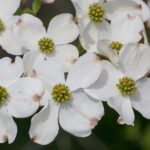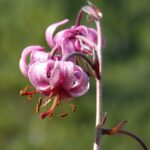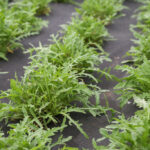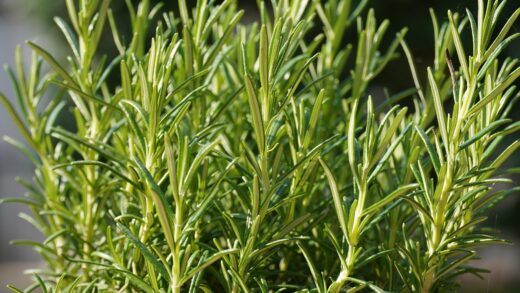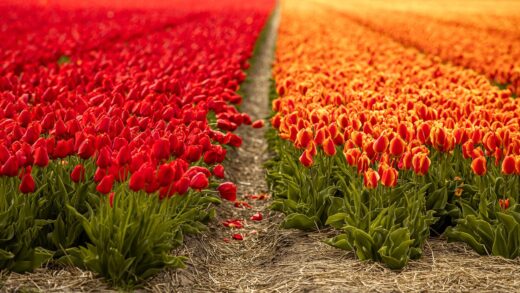Caring for the amethyst hyacinth

Brimeura amethystina, commonly known as the amethyst hyacinth, is a delightful and relatively low-maintenance bulbous perennial that can bring a touch of elegance to any garden setting. Native to the mountainous regions of Southwestern Europe, this plant is admired for its delicate, bell-shaped flowers that appear in late spring, creating a charming display of colour. Successful cultivation hinges on understanding its basic needs, from soil composition to its seasonal growth cycle. Providing the right conditions will ensure that these graceful plants not only survive but thrive, rewarding the gardener with their ethereal beauty year after year. Proper care involves a balanced approach, ensuring adequate moisture during its growth phase while allowing for a necessary dry period during dormancy.
Understanding the growth cycle
The life cycle of Brimeura amethystina is a key factor in its successful cultivation, as its care requirements change significantly throughout the year. The plant emerges in the spring, with slender, grass-like leaves appearing first, followed by the delicate flower stalks. This active growth phase is when the plant requires the most resources, including water and nutrients, to develop strong foliage and vibrant blooms. It is during this period that the bulb is also storing energy for the following year’s display, making this a critical time for attentive care. Understanding this rhythm is fundamental to providing what the plant needs at the right moment.
After the flowering period concludes, typically by early summer, the foliage will begin to yellow and wither. This is a natural part of the plant’s cycle as it enters its summer dormancy period, a crucial phase for its long-term health. It is essential not to remove the foliage prematurely, as the leaves are still photosynthesizing and transferring energy back to the bulb. This energy reserve is vital for the plant to survive the dormant period and to produce a robust display of flowers the following spring. Once the leaves have completely dried and died back, they can be carefully removed.
During summer dormancy, the bulb rests underground, awaiting the cooler temperatures of autumn to begin root development anew. This is a period of minimal activity above the ground, and the plant’s need for water is drastically reduced. In fact, excessive moisture during this time can be detrimental, leading to bulb rot and other fungal issues. The soil should be allowed to dry out considerably, mimicking the conditions of its native Mediterranean climate. This dry rest is not a sign of neglect but a specific requirement for the plant’s survival and future performance.
As autumn arrives, the dormant bulbs begin to stir beneath the soil surface, developing new roots in preparation for the next spring’s growth. While there is no visible top growth, this underground activity is essential. This is the ideal time for planting new bulbs or dividing existing clumps. The care provided during this period, primarily ensuring the soil is well-draining, sets the stage for a healthy emergence in the spring. Recognizing these distinct phases—spring growth, summer dormancy, and autumn root development—is the cornerstone of effective Brimeura amethystina care.
More articles on this topic
Ideal soil composition
Providing the right soil environment is arguably one of the most critical aspects of caring for Brimeura amethystina. This plant thrives in soil that is exceptionally well-draining, a characteristic that cannot be overstated. In its native habitat in the Pyrenees, it grows in gritty, often rocky soils, which prevent water from stagnating around its bulbs. Therefore, heavy clay soils that retain excessive moisture are the primary enemy of this species, as they can quickly lead to bulb rot, a fatal condition. Amending heavy soils is not just beneficial but absolutely necessary for the plant’s survival.
The ideal soil mix for the amethyst hyacinth is a loamy or sandy loam that is rich in organic matter. Incorporating materials like horticultural grit, coarse sand, or fine gravel will significantly improve drainage and create the porous structure that these bulbs prefer. Furthermore, adding well-rotted compost or leaf mould will enhance the soil’s fertility and structure without making it overly heavy. The goal is to create a medium that holds just enough moisture to sustain the plant during its active growth phase but allows excess water to percolate away freely, especially during its dormant period.
The pH of the soil is another important consideration for optimal growth. Brimeura amethystina generally prefers a neutral to slightly alkaline soil pH. Most garden soils fall within a suitable range, but it can be beneficial to conduct a simple soil test if you are unsure. If your soil is overly acidic, amending it with a light application of garden lime can help to raise the pH to a more favourable level. This adjustment should be done cautiously and based on the results of a soil test to avoid over-liming, which can create its own set of nutrient availability issues for the plants.
When planting in containers, the principles of excellent drainage remain paramount. A high-quality potting mix designed for bulbs or alpine plants is an excellent starting point. To further enhance drainage, you can add extra perlite or grit to the commercial mix. Ensure that any container used has ample drainage holes at the bottom. Placing a layer of broken pottery or gravel at the base of the pot is a traditional but now often debated practice; focusing on the porosity of the soil mix itself is generally more effective at preventing waterlogged conditions around the roots.
More articles on this topic
General maintenance practices
Once established, Brimeura amethystina is a relatively self-sufficient plant, requiring minimal ongoing maintenance beyond its basic needs. A key practice is deadheading, which involves removing the flower stalks after the blooms have faded. This prevents the plant from expending energy on seed production and instead directs those resources back into the bulb for the following year’s growth. To deadhead, simply snip the flower stalk off at its base, leaving the foliage intact to continue its work of photosynthesis until it naturally dies back.
Weed control is another important aspect of maintenance, particularly when the plants are young and establishing themselves. Weeds can compete for water, nutrients, and light, potentially stunting the growth of the delicate amethyst hyacinth. Hand-weeding is the most effective and safest method, as it avoids disturbing the shallow bulbs. Applying a layer of organic mulch, such as fine bark chips or leaf mould, can help to suppress weed growth while also conserving soil moisture and regulating soil temperature, providing multiple benefits with a single application.
Over time, clumps of Brimeura amethystina will naturally expand as the parent bulbs produce offsets. While this creates a lovely, naturalized effect, the clumps can become overcrowded after several years. This overcrowding may lead to reduced flowering and overall vigour as the bulbs compete for limited resources. Dividing the clumps every three to four years can rejuvenate the planting and provide an opportunity to propagate the plant. This is best done in late summer or early autumn when the bulbs are dormant.
Finally, observing your plants regularly is a simple yet crucial maintenance task. By paying close attention, you can catch any potential issues, such as signs of pests or diseases, before they become significant problems. Regular observation also helps you to better understand the plant’s response to its environment, allowing you to fine-tune your care practices. For instance, noticing wilting leaves during the growing season might indicate a need for more water, while yellowing leaves during the same period could signal overwatering or poor drainage, prompting an investigation of the soil conditions.
Container cultivation
Growing Brimeura amethystina in containers is an excellent option for those with limited garden space or for creating focused, beautiful displays on patios and balconies. The key to success in pots is to replicate their preferred garden conditions, with a particular emphasis on drainage. Choose a pot that is sufficiently deep to accommodate root growth and has multiple drainage holes. Terracotta pots are a particularly good choice as their porous nature allows for better air exchange and helps the soil to dry out more evenly, reducing the risk of waterlogging.
The choice of potting medium is critical for container-grown amethyst hyacinths. A standard multipurpose compost is often too dense and moisture-retentive. Instead, create a custom mix by combining a loam-based compost with an equal part of horticultural grit or perlite. This will create the sharp-draining, open-textured soil that these bulbs require to prevent rot. Planting the bulbs at a depth of about twice their own height is a good rule of thumb, ensuring they are adequately covered but not buried too deeply within the container.
Watering container-grown plants requires careful management. During the active growing season in spring, the soil should be kept consistently moist but never saturated. Check the soil moisture regularly by inserting a finger into the top inch; if it feels dry, it’s time to water thoroughly until you see excess draining from the bottom. Once the foliage begins to die back in early summer, signaling the start of dormancy, watering should be reduced dramatically. For the remainder of the summer, the pot should be kept in a dry, sheltered location, allowing the soil to dry out completely.
Fertilizing is more important for container-grown plants than for those in the ground, as the potting mix has a finite supply of nutrients. After the shoots emerge in spring, begin feeding with a balanced liquid fertilizer diluted to half-strength. Apply this every two to three weeks until the flowers begin to fade. Avoid high-nitrogen fertilizers, which can encourage excessive leafy growth at the expense of flowers. A formulation higher in potassium and phosphorus, such as a tomato or bulb fertilizer, is ideal for promoting strong blooms and healthy bulb development.
Companion planting
Choosing the right companion plants for Brimeura amethystina can elevate a garden design from simple to stunning. The best partners are those that share similar growing requirements, particularly a preference for well-drained soil and a sunny or partially shaded location. Early-blooming perennials and other spring bulbs that will not overwhelm the delicate stature of the amethyst hyacinth are excellent choices. Plants with contrasting textures or colours can create a visually dynamic and harmonious display, highlighting the graceful beauty of the Brimeura’s bell-shaped flowers.
Low-growing, mat-forming alpine plants make superb companions. Species such as creeping thyme (Thymus serpyllum), aubrieta, or certain types of sedum can create a living mulch around the bulbs. This ground cover helps to suppress weeds and retain soil moisture during the growing season, while their fine-textured foliage provides a beautiful contrast to the grass-like leaves of the Brimeura. Furthermore, their shallow root systems are unlikely to compete aggressively with the bulbs for resources, allowing both plants to coexist peacefully and effectively in a shared space.
Pairing Brimeura amethystina with other spring-flowering bulbs can extend the season of interest and create layered, colourful tapestries. Consider planting them alongside species like grape hyacinths (Muscari), crocuses, or early-flowering dwarf daffodils. When selecting bulb companions, pay attention to their respective bloom times to orchestrate a succession of colour. For instance, early crocuses can provide colour before the Brimeura emerge, while the amethyst hyacinths can take over as the crocuses fade, ensuring a continuous display throughout the spring months.
Grasses and fine-textured perennials can also be effective partners. The delicate flowers of Brimeura amethystina look particularly enchanting when viewed through a screen of fine foliage. Ornamental grasses such as blue fescue (Festuca glauca) or the delicate leaves of a hardy fern like the maidenhair fern (Adiantum venustum) can provide a soft backdrop that accentuates the amethyst hyacinth’s airy flower spikes. This type of pairing creates a naturalistic, woodland-edge feel, which is perfectly suited to the plant’s graceful and understated character.
Seasonal considerations
Adapting the care of Brimeura amethystina to the changing seasons is fundamental to its long-term health and prolific flowering. Each season presents a different set of tasks and environmental conditions that must be addressed. In spring, as the new shoots emerge, the primary focus is on providing adequate moisture to fuel their rapid growth and flower development. This is the period of most active water uptake, so the soil should not be allowed to dry out completely. It is also the time to apply a suitable fertilizer to support the plant’s energy-intensive flowering process.
As spring transitions into summer, the care routine must shift dramatically. Following the flowering period, the foliage will naturally begin to senesce. It is crucial to allow this process to complete without interference, as the dying leaves are replenishing the bulb’s energy stores. Once the leaves have fully withered, watering should be significantly curtailed. The bulbs require a warm, dry dormancy period throughout the summer months. Moving container-grown plants to a sheltered spot, away from rain, is a wise precaution to prevent the bulbs from rotting in wet soil.
Autumn is the season for planting and propagation. The soil has cooled from the summer heat, providing ideal conditions for new bulbs to establish their root systems before winter. This is the perfect time to plant new Brimeura amethystina bulbs or to lift and divide existing clumps that have become overcrowded. When planting, ensure they are placed in a location with excellent drainage to prevent them from sitting in cold, wet soil during the winter. A light top-dressing of bone meal or a similar low-nitrogen, high-phosphorus fertilizer can be worked into the soil at planting time to encourage strong root growth.
Winter care for Brimeura amethystina is generally minimal, as the bulbs are hardy and dormant underground. In regions with very severe winters or fluctuating freeze-thaw cycles, applying a protective layer of mulch can be beneficial. A few inches of straw, shredded leaves, or bark chips can help to insulate the soil, protecting the bulbs from extreme cold and preventing premature sprouting during brief warm spells. For plants in containers, it is important to ensure they do not become waterlogged and freeze solid, which can damage the bulbs. Moving pots to a sheltered location, such as against the wall of a house or in a cold frame, can provide sufficient protection.
📷: Krzysztof Ziarnek, Kenraiz, CC BY-SA 4.0, via Wikimedia Commons









